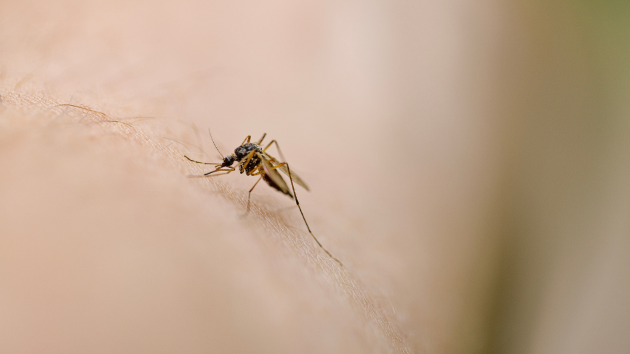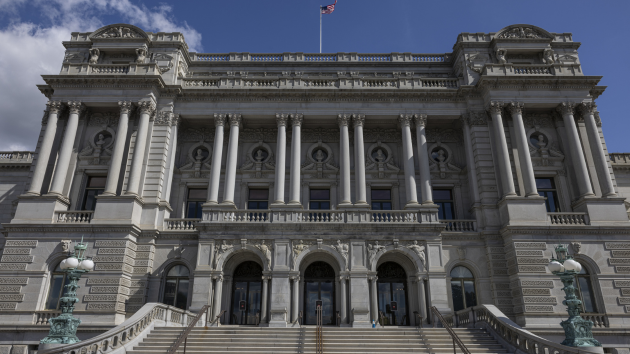Native Hawaiians fighting to take control of Maui’s water rights amid wildfire cleanup
Written by ABC Audio. All rights reserved. on December 8, 2023
(LAHAINA, Hawaii) — A battle is brewing in Maui over one of the most essential resources for human survival: water.
Four months after West Maui suffered the deadliest natural disaster in the state’s history, residents are seeking existing water rights, which many characterize as “stolen” from the native population who have lived on the island for generations in favor of Westerners looking to deepen their pockets.
Water, land and the environment play a special role in Native Hawaiian culture and way of life. They are sacred elements of existence, requiring protection and careful stewardship, local Maui farmers told ABC News.
“As Hawaiians, we believe that everything matters: The air, the wind, the trees, the animals, the species, the humans, the ocean, the fish. Everything matters,” Jerome Kekiwi Jr., a taro farmer in east Maui and president of a Maui-based nonprofit called Na Moku Aupuni o Ko’olau Hui that promotes the interests of Native Hawaiians in Maui, told ABC News. “With water, all of that is possible to have in abundance.”
Hawaii allocates its water under a “rights” system, similar to other states in the western United States. Residents and companies can own the right to draw water from a source, which is usually located on their own land. But they can’t own the water source itself, state law dictates.
Hawaiian law protects traditional and cultural use. But as the wildfire cleanup continues, rebuilding plans come to fruition and climate change threatens the island’s future water supply, Native Hawaiians want less water to be diverted to corporations and developments and more to be allocated to residents and local farmers.
“This is like a reset button,” Hokuao Pellegrino, a taro farmer in central Maui and a prominent advocate for indigenous water rights on the island, told ABC News.
The history of water rights in Maui
Native Hawaiians would say the trajectory in overconsumption of the island’s water resources began when sugarcane plantations began to replace local farmers as the main crop producers in the 19th century, according to Pellegrino.
While native farmers who cultivated taro, an indigenous root vegetable known as “kalo” in the Hawaiian language, had traditionally used neighboring streams to irrigate their crops, the emergence of mono-crop farming on the island established a centuries-long legacy of stolen land and water that persisted for decades, Pellegrino said.
Native Hawaiians stress the importance of restoring balance to the island — a notion far removed from the tendencies to “take take take” displayed by the foreigners who came to do business in Maui, Pellegrino said.
Indigenous populations diverted water themselves, said Pellegrino, who farms on his family’s ancestral lands. They had to in order to cultivate wetland taro, a staple in the Hawaiian diet that can’t thrive without an adequate water source.
But when the sugar plantations were established, the developers dug deeper into the water sources. Instead of taking the water supply needed to cultivate the crops, they “ended up taking the whole stream along with it,” Pellegrino said.
“We went from a time that our people lived in balance, and had a high level of respect for our water resources, to an era that looks at water as a commodity,” he said.
Indigenous and local communities are often the most vulnerable to water shortages, especially because government water management and distribution processes don’t formally recognize customary water rights — traditional rights held by indigenous communities, Sandra Thiam, vice president of research and policy at the Environmental Law Institute, told ABC News.
In 2003, Pellegrino and other Hawaiian farmers embarked on a decade-long battle against plantations and local water companies to reclaim the water rights. A lawsuit against a water company and a sugar company aiming to amend the stream-flow standards to better reflect traditional flows was heard by the Hawaii Supreme Court in 2012, which resulted in a mediated agreement between the parties two years later.
By 2021, the state water commission established a water plan that recognizes traditional water rights and protecting stream flows. While the move is a step in the right direction, millions of gallons of public freshwater are still being sold for private profit, and the current water system is plagued by crumbling infrastructure, local activists say.
Currently, three regions in Maui are involved in “huge battles” with corporations on the island, Pellegrino said. East Maui, where most of the streams and rivers are located, is attempting to fight off an offshore company that bought the last sugar plantation with plans to grow citrus on 30,000 acres, he said. In addition, central Maui and West Maui are among the regions in which water, the public trust, is being sold by corporations back to residents as their drinking water, according to Pellegrino.
How water rights play into the aftermath of the wildfires
The water situation during the fire and in the immediate aftermath proved chaotic.
At the height of the fires in August, the water ran dry, with nothing flowing from hydrants when the firefighters needed it most. In Lahaina, the historic district and former Kingdom of Hawaii at the center of the destruction, electricity was shut off to prevent the continued spread of the fire in high winds. But the decision left the pumps powerless to move water through the pipes.
Limited access to water by landowners, in combination with drought, likely contributed to the dry fields that made the wildfires so explosive, Clay Trauernicht, a specialist in fire ecology at the University of Hawaii, told ABC News in September. Invasive grasses also play a role in the rapid spread, Abby Frazier, a climatologist at Clark University in Worcester, Massachusetts, told ABC News in August.
“The Lahaina fire is a grim reminder of the way that the changing climate can complicate ongoing environmental pressures and result in compound disasters,” Thiam said.
Just weeks after the fires broke out, West Maui residents identified developers on the island as public enemy No. 1 during discussions for revision or adjustments to the water rights — namely Peter Martin, the most prominent developer who began buying land in the region nearly 50 years ago, according to hundreds of testimonies given at community meetings since the wildfires.
During testimonies given during a nearly 12-hour state water commission hearing on Sept. 19 in Honolulu, Native Hawaiian farmers, environmental activists and Maui residents lambasted Martin for his role in water divisions in West Maui, labeling him as “the face of evil in Lahaina.”
Neither Martin nor the State of Hawaii Commission on Water Resource Management immediately responded to ABC News’ request for comment.
While most residents in the region are serviced by the county public water system, developments built by Martin draw water from private utility systems controlled by Martin that siphon water from underground aquifers and mountain streams — just one of the examples of inequality on the island, Pellegrino said. One of his luxury developments, Launiupoko, uses about 1.5 million gallons a day toward landscaping — more than half of all the water used in the neighborhood, according to a 2022 report by the state water commission.
The companies owned by Martin, a millionaire who made the bulk of his fortune from the island’s real estate market by turning what was previously farmland into luxury homes, own more than 5,500 acres of land around Lahaina, according to an analysis of county records by nonprofit environmental news magazine Grist. Martin’s companies are known to push back against water regulations intended to protect the rights of Native Hawaiians, Grist reported in November.
Hawaii’s state constitution and state water statutes have some notable protections for traditional and customary water use. The state constitution establishes water as a “public trust” that state officials have “an obligation to protect, control and regulate the use of.”
In 2018, the state water commission set strict limits on water diversion in West Maui, issuing fines — up to $5,000 daily — to developers when the rules were violated, to prevent already oversubscribed aquifers from further depletion.
In his interview with Grist last month, Martin likened the public who criticized him to a “mob” that state commissioners couldn’t help but listen to.
“When you’re around a gang of people, a mob, the commissioners just listen to the mob,” the 76-year-old told the magazine. “They don’t listen to reasoned voices.”
What needs to be done, experts say
One of the most important facets of maintaining a healthy ecosystem and watershed is making sure the water system retains mountain-to-sea, meaning the water is not diverted to the point where those flows can’t make that necessary journey, farmers say.
“Water is life,” Kekiwi said. “If you break that connectivity, you’re pretty much breaking that life source.”
Protecting the island’s water supply from over-extraction and continued drought will also need to be a priority, Pellegrino said.
“Strong, effective governance is increasingly vital to successful, equitable water allocation,” Thiam said.
“Proactive strategic planning and enabling policies and programs to changing circumstances are increasingly critical to effective and equitable water allocation,” she said.
In addition, establishing healthy communication with the corporations and utility companies would help the island make strides in ensuring its water supply going forward, Kekiwi said.
The communication has improved, he said. East Maui Irrigation actually calls his organization to let them know what diversions they are working on, Kekiwi said.
“That’s what we need more of,” he said. “More of the positive communication and collaboration.”
Residents say they’ll continue to fight
The power and will of Native Hawaiians have been put on display in the fallout of the wildfire destruction.
On Aug. 10, just two days after the fires broke out, an executive for one of Martin’s companies wrote a letter to the water commission stating that the request to fill its reservoirs on the day of the fire had been delayed and asked the state to loosen water regulations during fire recovery, the document, obtained by Grist, shows.
Hawaii Gov. Josh Green then suspended the water code in an emergency proclamation and temporarily reassigned the water commission’s deputy director, Kaleo Manuel, whom the company executive had implied in the letter had impeded firefighting efforts by withholding the release of water.
Manuel was later reinstated following an investigation by the state attorney general and public backlash over his removal, including public testimonies submitted by hundreds of people, and the water code was put back in place.
That passion was also displayed last year, when a six-hour debate over West Maui water rights led the state water commission to vote unanimously to take control of the region’s ground and surface water in June 2022.
The impassioned people of Lahaina can change the face of the island, Pellegrino said, describing the community as “resilient.”
“Whatever they say is going to happen, they’re going to make it happen,” he said.
The fight is worth it, Pellegrino added.
Today, residents in east Maui have more than 50% of their major streams flowing again, and flowing from the mountains to the sea — an effort more than 20 years in the making, Pellegrino said.
Activists are aware they need to remain vigilant, because well-moneyed corporations have the resources to swoop in and reverse their hard work, while the state does not have the resources to constantly monitor them, Pellegrino said.
“We have the knowledge to be able to keep these corporations in check,” he added.
Copyright © 2023, ABC Audio. All rights reserved.





